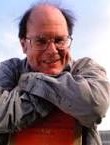-
(b.) - ?1943
Bio/Description
A physicist, information theorist and IBM Fellow at IBM Research, his recent work at IBM has concentrated on a re-examination of the physical basis of information, applying quantum physics to the problems surrounding information exchange. He has played a major role in elucidating the interconnections between physics and information, particularly in the realm of quantum computation, but also in cellular automata and reversible computing. He discovered, with Gilles Brassard, the concept of quantum cryptography and is one of the founding fathers of modern quantum information theory (cf. Bennett's four laws of quantum information). Born in New York City, he graduated from Croton-Harmon High School in 1960. He earned a B.S. degree in Chemistry from Brandeis University in 1964, and received his Ph.D. from Harvard in 1970 for molecular dynamics studies (computer simulation of molecular motion) under David Turnbull and Berni Alder. For the next two years he continued this research under the late Aneesur Rahman at Argonne Laboratory. After joining IBM Research in 1972, he built on the work of IBM's Rolf Landauer to show that general-purpose computation can be performed by a logically and thermodynamically reversible apparatus; and in 1982 he proposed a re-interpretation of Maxwell's demon, attributing its inability to break the second law to the thermodynamic cost of destroying, rather than acquiring, information. He also published an important paper on the estimation of free energy differences between two systems, the Bennett acceptance ratio method. In collaboration with Gilles Brassard of the Universit? de Montr?al he developed a practical system of quantum cryptography, known as BB84, which allows secure communication between parties who share no secret information initially, based on the uncertainty principle. With the help of John Smolin, he built the world's first working demonstration of quantum cryptography in 1989. His other research interests include algorithmic information theory, in which the concepts of information and randomness are developed in terms of the input/output relation of universal computers, and the analogous use of universal computers to define the intrinsic complexity or "logical depth" of a physical state as the time required by a universal computer to simulate the evolution of the state from a random initial state. In 1993 he and Brassard, in collaboration with others, discovered "quantum teleportation", an effect in which the complete information in an unknown quantum state is decomposed into purely classical information and purely non-classical Einstein-Podolsky-Rosen (EPR paradox) correlations, sent through two separate channels, and later reassembled in a new location to produce an exact replica of the original quantum state that was destroyed in the sending process. In 1995 - 1957, working with Smolin, Wootters, IBM's Di Vincenzo, and other collaborators, he introduced several techniques for faithful transmission of classical and quantum information through noisy channels, part of the larger field of quantum information and computation theory. He is a Fellow of the American Physical Society and a member of the National Academy of Sciences. He was awarded the 2008 Harvey Prize by the Technion and the 2006 Rank Prize in opto-electronics. He is married with three grown children. His wife, Theodora M. Bennett, is retired, having directed a housing mobility program in Yonkers. His main hobbies are photography and music.
-
Date of Birth:
1943 -
Gender:
Male -
Noted For:
Co-discoverer of the concept of quantum cryptography and is one of the founding fathers of modern quantum information theory -
Category of Achievement:
-
More Info:


